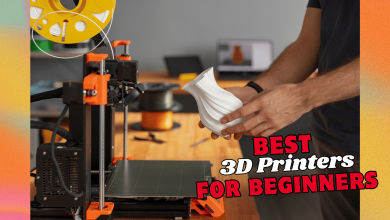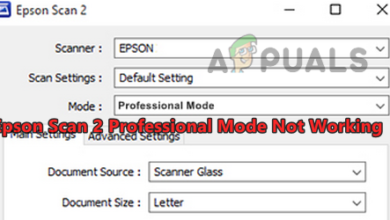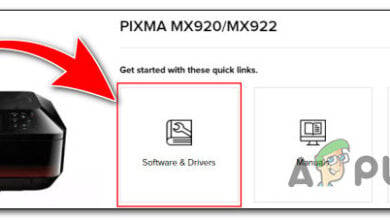What Are the Best Types of Paper for Printing?
- Even in our digital age, physical materials like paper still play a vital role, especially in printing, where the type of paper can greatly affect the final product.
- Different printers are best suited to specific paper types, such as glossy for photos or cardstock for invitations, highlighting the importance of choosing the right paper for your project.
- The variety of paper options, with different textures, weights, and finishes, allows for creativity and precision in achieving the desired look and feel for each print job.
Choosing the right paper for your print job is not an easy task. You need to understand factors like paper weight, finish, and brightness. The combination of these qualities results in numerous paper types, each suited to a specific use case.

You wouldn’t want to print your cherished pictures on cardstock paper, and you certainly wouldn’t want to print your business card on standard printer paper. Knowing the different options available can help you make the most of your printer for a broader range of projects.
Table of Contents:
Types of Printer Papers
1. Inkjet Paper

As the name suggests, inkjet paper is specifically designed for inkjet printers to create clear text and sharp images. It can be further classified into various types, such as glossy, matte, and card, to suit different needs. However, this doesn’t mean that other paper types won’t work with these printers. The specification is simply to achieve the best results, as inkjet paper tends to absorb ink and is thus made slightly thicker.
2. Laser Paper

Similarly, laser paper is specifically designed for laser printers to produce high-quality results. This type of paper is usually best for office use, such as memos, invoices, and high-volume documents. The finish is typically matte to avoid delaying drying time.
Since the toner stays on the surface of the paper in laser printing, it is not designed for maximum absorption, unlike inkjet paper, which can withstand more moisture comparatively.
3. Copy Paper

While some may use copy paper and laser paper interchangeably, there’s a distinct difference between the two. Copy paper is the kind you usually find next to your office printer in a large box. It is thinner and less expensive than laser paper and, well, gets the job done. However, color accuracy and print quality may sometimes be compromised.
4. Matte Paper

Matte paper, or more commonly known as printer paper, features a non-reflective, smooth, and non-textured finish that provides a clean and professional appearance. For this reason, it is ideal for printing reports and resumes, although the latter is less common these days.
But what’s even better, you ask? You can produce double-sided printouts without having silhouettes show on the other side. Talk about a great balance of cost-effectiveness and resource efficiency in the long run!
5. Glossy Paper

Looking for a touch of pizzazz? Then a glossy finish is the way to go. It not only enhances contrast and color saturation, but when combined with durable inks and color-depth cartridges, it produces brilliant and crisp photographs and marketing materials. Text documents are not the best use of this paper, unless, of course, you’re aiming for an extra element of sophistication.
6. Photo Paper

Photo paper is specifically designed for printing photographs and is available in several finish options, such as matte, glossy, and satin. In fact, it often has a different finish on each side and is thicker than most papers.
The purpose of this paper, as clear as the results it produces, is to deliver exceptional sharpness and color reproduction. After all, what good is a photograph if it’s not preserved in its best quality for many years to come? However, you should check your printer’s manual or the manufacturer’s website to see if it can handle photo paper and its thickness.
7. Card Stock Paper

You might still be wondering what to use for printing business cards, wedding invitations, flyers, or other formal materials for your brand. Using regular printer paper or glossy paper for these purposes may not be very convincing. For this, you need the durability and sturdiness offered by card stock paper.
The premium feel and longevity of this material can withstand harsh handling and minimize damage. However, keep in mind that not all printers are designed to handle card stock. So, if you use an incompatible printer, be prepared for paper jams or other similar issues.
8. Bond & Label Paper

Ever noticed how receipts and labels paper feel different from your everyday paper? That’s because it’s a special material called thermal roll or bond roll, which features a texture similar to fabric.
The “thermal” in its name refers to the printing process that uses heat to imprint the image onto the paper. This method not only reduces ink costs but also prevents smudging and smearing. However, receipts and labels aren’t its only applications. Thermal paper is used in various fields, from art to business and beyond. But mostly where ink permanence is the top priority.
Which Paper is Best for Your Print Job?
Since everyday tasks typically require standard matte paper and most office printers use laser paper for document reproduction, you don’t need extraordinary printers or thicker paper for these tasks.
But if you wish to print cards, invitations, and brochures, you’ll definitely need to stock up on card stock and glossy paper. And if you’re a photographer with a studio, you wouldn’t need to purchase anything other than photo paper—until you decide to leave the profession, that is.

But it doesn’t end there. Each paper type is available in various sizes, ranging from A1 to A10. While standard printers typically support A4 and/or A3 sizes, specialized printers can accommodate a wider range of sizes, along with different coatings and weights, providing maximum flexibility for your printing needs.





